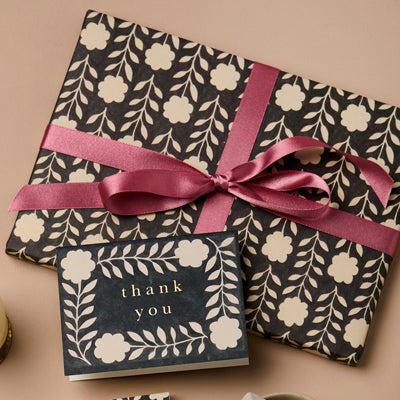Unwrapping the History of Greeting Cards and Wrapping Paper

In a world driven by digital communication, the tactile experience of receiving a physical greeting card still holds a unique charm. As we flip through layers of colorfully designed wrapping paper, preparing a gift for someone special, we're often transported through time and tradition. But have you ever paused to wonder about the rich history behind these time-honored customs? Join me as we explore the captivating journey of greeting cards and wrapping paper.
The Origins of Greeting Cards
The concept of sending messages to convey sentiments is ancient, with roots that can be traced back to ancient China. The Chinese began exchanging wishes for good fortune on paper during the New Year festivities as early as the 15th century. By the 19th century, the custom began to evolve in Europe, particularly in England. The introduction of lithography made it easier to print colorful and intricate designs, leading to the rise of commercially produced greeting cards.
The Victorian era marked a golden age for greeting cards. With advancements in printing technology, cards became more innovative, incorporating lace, ribbons, and even pop-up elements. This period saw the proliferation of cards for various occasions, ranging from birthdays to holidays, anchoring their place in societal practices.

The Transition to Modernity
The 20th century brought about many changes, including the establishment of major card companies like Hallmark in the United States, founded in 1910. This company revolutionized the industry, making greeting cards accessible to a wider audience. The advent of the internet in the late 20th century posed new challenges for traditional card sending. While e-cards gained popularity, nothing quite rivals the personal touch of a handwritten card.
Today, greeting cards serve not just as vessels for sentiment but as an extension of personal style and creativity. Whether crafted by hand or mass-produced, they communicate relationships and emotions in ways words alone sometimes cannot.
The Story of Wrapping Paper
As we dive deeper, the history of wrapping paper intertwines with gift-giving culture. The earliest forms of wrapping paper can be dated back to ancient civilizations. The Chinese utilized paper to wrap gifts, while the Japanese had their own unique approach, using layers of beautiful silk or fabric.
In the 19th century, as with greeting cards, the production of wrapping paper began to flourish with advancements in printing technology. The first commercial wrapping paper was produced in the United States in the late 1800s, often decorated with festive patterns that added an extra dose of delight to the act of giving.

The tradition of wrapping gifts also reflects societal attitudes toward the act of gifting itself. It symbolizes the care and effort put into choosing a present, transforming even the simplest gift into something special.
The Uniting Thread
Both greeting cards and wrapping paper share a common purpose: to enhance the experience of gift-giving. They help bridge the gap between the giver and receiver, adding layers of joy, surprise, and anticipation. As we celebrate cherished moments and relationships, these tangible items become tokens of affection, embodying emotions that resonate deep within us.
In conclusion, the history of greeting cards and wrapping paper offers a fascinating glimpse into culture and tradition. Despite our fast-paced digital world, they continue to serve as meaningful gestures of love and connection. So, the next time you send a card or wrap a gift, take a moment to appreciate the rich history that envelops these simple yet profound acts of kindness.
Whether you’re an avid card collector or simply enjoy adding a special touch to your gifts, the legacy of greeting cards and wrapping paper is one that transcends time and fosters human connection. Let’s keep the tradition alive!






Leave a comment